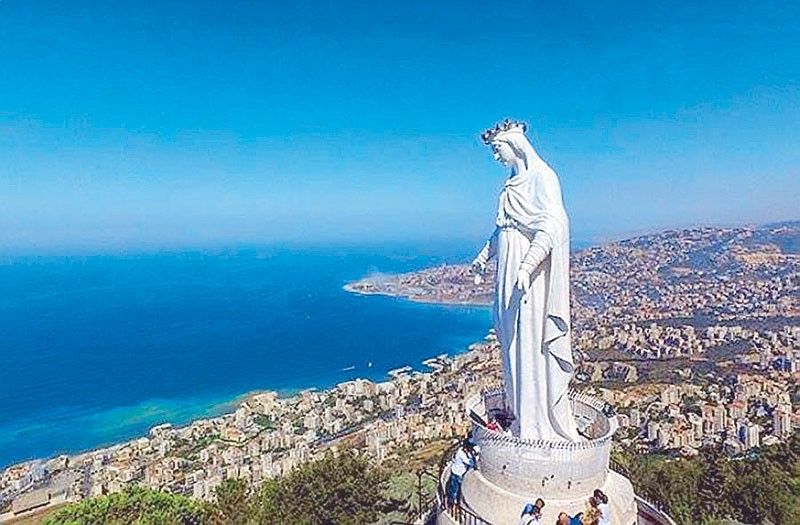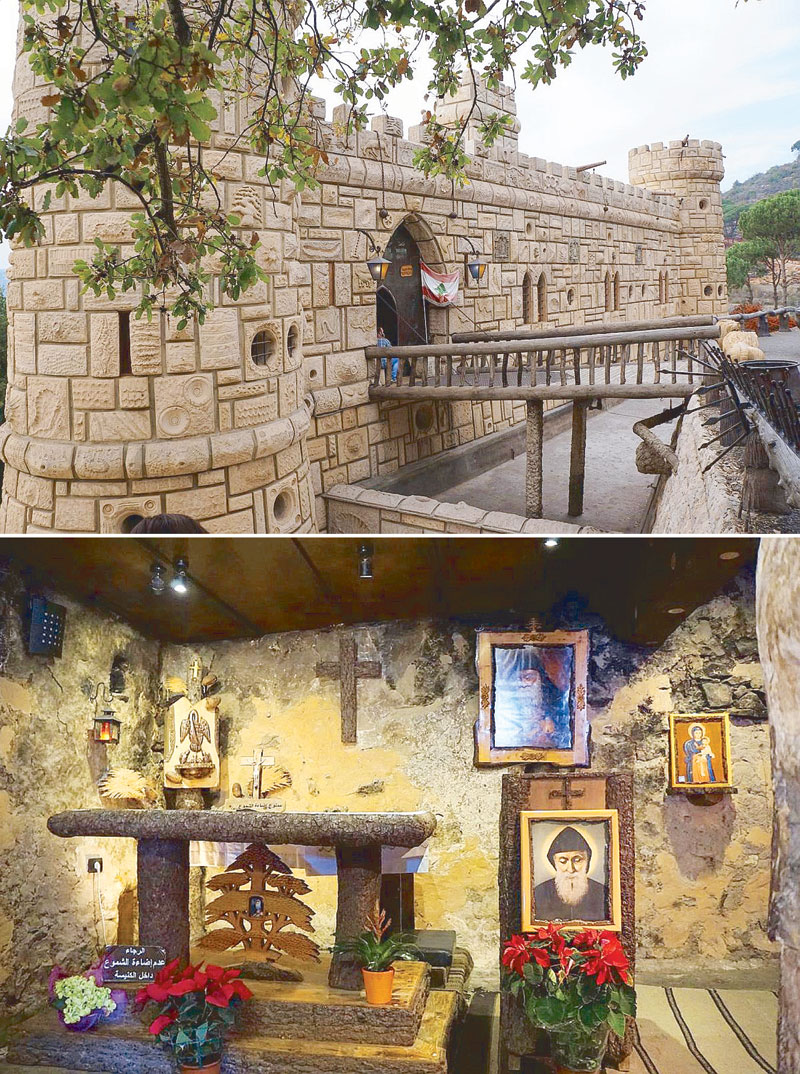Like the cedar, Lebanon stands tall

I had always wondered why the cedar is described as ‘standing tall’ – until I went to the Lebanese Republic last December and finally understood why.
Cedars are extraordinarily tall trees that thrive in the desert. They are sturdy and firm. Somehow, I couldn’t help noting the remarkable connection between the cedar tree and the country where it grows in abundance.
Observing its people and understanding their heritage and culture, I must say that Lebanon stands tall in the region – indeed, like a cedar tree.
Lebanon is located west of Asia, in the eastern section of the Mediterranean basin. It is bordered by Syria to the north and east, and Israel to the south. The country acts as an intersection of the East and the West – a country of rich diversity and great allure.
Admittedly, Lebanon is not really popular among tourists and pilgrims, perhaps because its image as a war-torn country prevails in much of mainstream media. But I must tell you that Lebanon’s cultural heritage and the hospitality of its people make it a promising destination in more ways than one.
Cosmopolitan Beirut
Soon after we arrived at the Beirut International Airport, we caught glimpses of the cosmopolitan life of Lebanon’s capital city and center of commerce. Beirut City itself boasts a very prestigious past. Thousands of years ago, the city was a prosperous port on the Canaanite-Phoenician coast, and an important commercial center because it acted as a crossroads for both eastern and western civilizations.
Just like other coastal cities, Beirut was occupied several times; each occupation brought about destruction and resurgence, with intermittent periods of prosperity. Walking through the city, you feel the ancient presence of its former inhabitants – the Canaanites, Greeks, Romans, Byzantines, Ottomans and the French. Indeed, Beirut is a blend of the past and the present. To a newcomer, the city unravels like a dazzling array of cultures.

Our Lady of Lebanon looks down on Beirut (above). The image was carved in Lyons, France.The Moussa Castle (above right) took a visionary 60 years to complete.
We set out on a city tour the next day. We alighted from our bus for a short walk along Corniche Road, a two-lane pathway that acts like a mantle with a beautiful, panoramic view of the famous Pigeon’s Rock. Then we visited two churches, the Greek Orthodox Cathedral and the St. George Maronite Cathedral, the ecclesiastical seat of the Maronite Archdiocese in Lebanon. These churches are notable hallmarks in downtown Beirut. St. George Orthodox Cathedral, in fact, mesmerizes with its icons and frescos.
We also took time to visit the National Museum, considered by the Lebanese people as the most extensive collector of antiquities. No wonder it is reputably one of the richest museums in the Middle East. Severely damaged during the Lebanese war (1975-1990), the National Museum aims to restore its glorious past as the conservator of the Lebanese heritage.
Next we drove to Damour, a small town about 17 kilometers south of Beirut, then proceeded to Deir el-Qamar, the idyllic town that houses the grand Moussa Castle Museum, which predominantly figures as the “go-to” place in Deir el-Qamar. The castle-turned-museum showcases a rich collection of artifacts of the Lebanese people’s past. From there, we went to the Beiteddine compound, where a reconstruction of its hallmark churches and mosques were in full swing.
Moussa Castle is the life work of a Lebanese visionary, requiring 60 years of dedicated hard work to finish. Moussa’s castle was built with the beliefs and ideas of its builder engraved on its stones.
Little known but beloved saints
Three other churches were in the itinerary on our third day in Lebanon. First, we visited the church of St. Rafqa. Canonized by Saint Pope John Paul II in 2001, St. Rafqa was a mystic and revered figure for Christians in Lebanon.
The church of St. Nehmatallah Hardini came next. St. Nehmetallah was a monk, a man whose life was dedicated entirely to prayer and the Holy Eucharist. It was said that upon his death, the room was filled with bursting lights and a sweet scent. It was also said that the beloved saint cured many ailments and illnesses.
After a brief tour, we headed for the church of St. Charbel. The church is a pilgrim site because of what people claim as the extraordinary circumstances that accompanied the death of this beloved saint.
Before the day ended, we went for a short trip to Byblos, a fascinating ancient city peppered with architectural antiquities and landmarks. Our day was capped by an appreciation of the life stories of the Lebanese people that satisfied not only our appetite for culture, but also our longing for incarnate spirituality.
Tyre, a World Heritage Site
Day four offered exciting stops at the ancient towns of Tyre and Sidon. Sidon is a good one-hour trip, some 50 kilometers from downtown Beirut. Meanwhile, Tyre, a town 83 kilometers south of Beirut, has been declared a World Heritage Site. Both cities showcase remnants of their magnificent past. Ruins of arenas, colonnades, necropolises, public baths, among many others, speak volumes of how prosperous the cities were in their heyday.
From Sidon, we proceeded to the Maghdouche City and the sanctuary of Our Lady of Mantara (Awaiting). The sanctuary boasts of a natural cave where, according to tradition, the Virgin Mary waited for her son, Jesus Christ, while the latter was preaching in Sidon. Back then, Jewish women were not allowed to go inside the said Phoenician town. The sanctuary is known as a refuge for children, and for those suffering from eye ailments.

Tucked away on the highest hill in Lebanon, the village of Bekaa Kafra is the birthplace of Saint Charbel (above).
On the fifth day, we made plans to visit three places – the Jeita Grotto, the Shrine of Our Lady of Lebanon and the Cathedral of St. Paul in Harrisa.
The Jeita Grotto is a marvel of natural cave and rock formations. According to the tour guides, the cave houses the largest stalactite formation in the world. It is so grandiose that the grotto even ended up as a finalist in the selection of the New Seven Wonders of Nature. Small wonder that travelers’ visits at the magnificent cave formation are restricted to a reasonable degree. Precautions must be taken to preserve its beauty and natural landscape.
From the Jeita Grotto, we hopped over to the Shrine of Our Lady of Lebanon, of the Maronite Patriarchate. It is said that the image of our Lady stretches towards Beirut City.
Our last stop was the Cathedral of St. Paul, where we had more time to pray since this was our last stop for the day.
Christmas Day in Beirut
Six days into the pilgrimage and it was Christmas Day. We decided to take time off and fulfill our Christian obligation to worship Jesus who became man for us. We had our spiritually enriching moments, but the afternoon was spent on more mundane pursuits like shopping, dining and simply relaxing amid the festive Yuletide lights of downtown Beirut.
The following day, we drove towards Chekka and savored the vistas of both the sea in the horizon and the awe-inspiring mountain ranges of Lebanon. There we paused to see the famous cedars, which, it is said, have existed for more than a thousand years.
Moving on, we went to Qadisha Valley’s Bsharri town, known to have been inhabited in 3000 BC. We visited a museum in the town, dedicated to Gobran Khalil, the illustrious sage and poet. In Bsharri were caves, chapels, hermitages and monasteries that were carved out from rock formations.
We drove on to Bekaa Kafra, a village located at the highest point in Lebanon. St. Charbel, whose church we visited earlier in the pilgrimage, was a native of this highland village.
A tour of Beqaa Valley was the final stop in our itinerary. We went to the plains of Baalbek and marveled at the ruins of this ancient city, which has been – from the beginning – a site for pilgrims of the known world. The ruins mostly reflected their Greco-Roman origins on account of their significance as a center for worship during its time. Then we went to Ksara Caves for wine tasting, followed by a trip to the Sanctuary of Our Lady of Bechouat, a Marian shrine. The shrine is known for its 1741 Byzantine wooden icon discovered in the deep caves, and for its miracles in favor of pilgrims who professed devotion to Our Lady.
We capped our pilgrimage with another half day of meandering around the city just to relax and take in all the beauty of Lebanon, a beautiful place yet undiscovered by many travelers, including Filipinos.



















